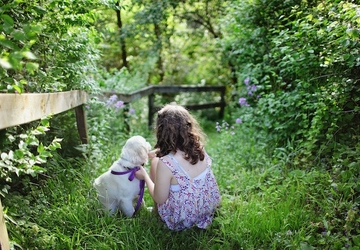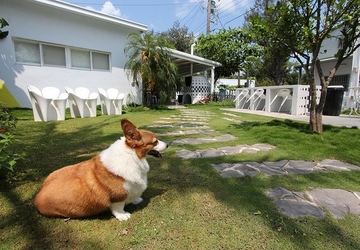Planting a garden is exciting. However, if you have pets, other factors must be considered. By taking prudent steps, everyone can be kept safe without significantly impacting the environment. Providing a safe environment where young animals can explore freely and satisfy their natural desire to explore the outdoors is crucial. By following these tips, you can ensure a safe, risk-free outdoor environment and provide a safe space for your loved ones, including your beloved pets.
1. Choose plants wisely
Most pets have a natural tendency to eat plants. If plants contain harmful substances, this can not only damage your garden, but your pets as well. When choosing plants for your garden, it's important to fully evaluate their potential hazards to pets.
2. Create a pet zone
Thoughtful yard planning is all about creating separate areas for your pets to dig, play, or meet their toilet needs. This can make your outdoor area visually appealing while also meeting your pet's needs. Low hedges serve a dual purpose: They create pathways and keep pets out of unwanted places. Some sturdy, hardy groundcovers and edge plants can act as natural barriers, protecting sensitive plants from curious animals.
3. Create a shelter

Intelligently increase shade in your garden by incorporating trees or structures such as gazebos or pergolas. You may want to include a small animal shelter or designated private area in your plans so your pets have a shelter when it rains or needs some peace and quiet. In hot weather, it is important for pets, especially dogs, to have a shaded area to cool off.
4. Create an attractive garden
You can choose from a variety of attractive textures and finishes, such as B. Decorative Grass, for an inviting feel as you walk. Dogs thoroughly enjoy romping on their freshly mowed lawn, while cats enjoy sheer joy through activities such as scratching, jumping, playing, and hiding. Make your garden smart by setting up clear paths and designated areas to control and monitor pet behavior. This measure is taken to ensure the protection of sensitive plants and avoid unnecessary disturbance. Pets can easily navigate their surroundings if there is a gravel or stepping stone path. If you don't have trees in your yard, you can place upright logs of various sizes to provide areas for your cat to scratch, climb, and jump.
5. Choose the right type of mulch
Mulches of all types can be dangerous to your pets because they retain harmful pesticides and promote mold growth. Cocoa bean mulch is prone to mold growth and contains dangerous ingredients that can harm a variety of pets. When looking for a safer option, most people think opting for wood mulch is the best bet.
6. Use organic pesticides
Pesticides contain toxic substances that can endanger pets. Fortunately, there are plenty of pet options available that can take the worry out of not letting them roam free in your outdoor space. If you have pets, be sure to keep rat, ant or snail poisons out of your home. Curious cats and dogs can easily eat these items and become uncomfortable. Consult the knowledgeable team at a Stodels Garden Center near you for trusted advice on the safest household items.

7. Don’t Compost
Consuming compost or its runoff can pose a risk to your pets, as they may be tempted by discarded food and the strong odors that are common in compost piles. Make sure to keep your compost out of the reach of pets and dispose of runoff water properly.
8. Eliminate harmful insects
Plants attract various types of insects, including pests such as ticks, fleas and mosquitoes, which can be harmful to your pets. Smart strategies for protecting your pet from pesky insects are judicious use of insecticides in outdoor areas and regular administration of flea and tick medication to your furry companion. Mosquito prevention can be achieved in two ways: using citronella, and in more severe cases, strategically placed mosquito nets. It's important to make sure your pet is up to date on vaccinations, as this will help reduce the risk of contracting insect-borne diseases.
9. Protect your vegetable garden
A smart way to protect your pets from potentially harmful bites is to introduce them to your vegetable garden. Some vegetables are safe for pets, while others are best avoided. Pets can be at risk if they ingest excessive amounts of certain substances, and even small amounts of grapes or raisins can cause serious complications. A smart way to keep your pets away from growing vegetables is to consider raised beds, window boxes or hanging baskets as an alternative.
10. Cover your pool
Pets are just as vulnerable as children around the pool. Not all pets can swim, and even those that can have trouble getting out of a pool with insufficient water. Make sure to protect your pool with proper netting or safety barriers. Heat shields or "bubble" shields lack the necessary safety elements. Undoubtedly, these animals pose a greater threat because of their ability to overwhelm other creatures, greatly reducing their chances of escape, if not outright impossible. Also, pool covers have the added benefit of minimizing water loss through evaporation and maintaining water purity. Excess dirt on floors is a thing of the past.
Conclusion
Sometimes, the needs of your pet and your garden may overlap. Pets can be a garden hazard, just as certain items in the yard can be a hazard to pets. However, with a few simple steps we mentioned above, you can keep your pets and your lawn safe.